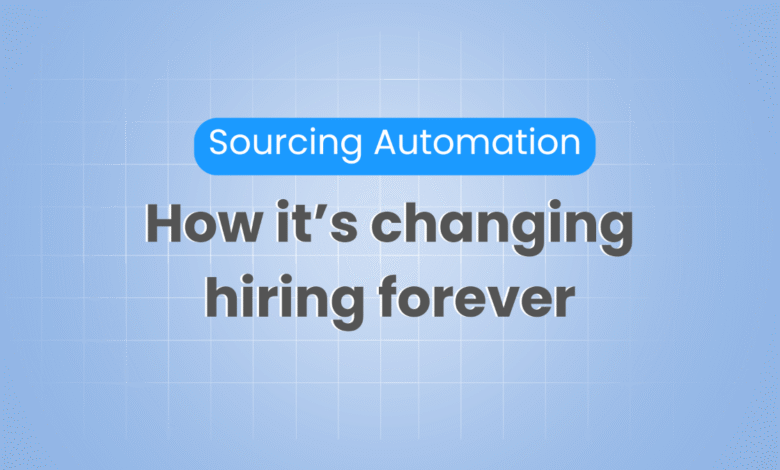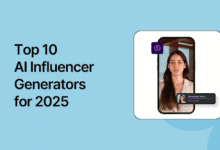How Sourcing Automation Is Changing the Way Companies Find Passive Talent

Key Takeaways:
- Sourcing automation leverages AI and machine learning to efficiently identify and engage passive candidates.
- Automated tools enhance candidate quality, reduce time-to-hire, and improve recruiter productivity.
- Implementing sourcing automation requires careful selection of tools and adherence to best practices to maximize benefits.
Introduction
In today’s fiercely competitive job market, the traditional recruitment playbook is no longer enough, especially when it comes to connecting with passive talent. These are not job seekers combing through online listings, but rather highly qualified professionals who excel in their current roles and may only consider a new opportunity if it offers significant advantages. For most organizations, missing out on this coveted talent pool can mean losing the race for innovation and business growth. This is where sourcing automation comes in, reshaping the recruitment landscape by strategically leveraging technology to bridge the gap. By investing in automated sourcing, companies gain a marked advantage, making talent acquisition teams more agile and expanding access to previously hidden talent markets.
The infusion of AI, sophisticated algorithms, and big data into sourcing not only increases the speed and reach of recruiting but also heightens precision. Organizations can now identify candidates who closely align with their hiring needs, regardless of whether those professionals are actively seeking new employment opportunities. This pivot toward technology-driven hiring elevates productivity, enables data-backed decisions, and ultimately revolutionizes the way businesses build their most critical asset—their teams.
Understanding Sourcing Automation
Sourcing automation refers to the deployment of advanced technologies, such as artificial intelligence (AI), machine learning, and natural language processing, to enhance how companies discover and engage potential candidates. This approach goes well beyond basic keyword searches or database scouring. Instead, AI-powered tools can analyze millions of profiles across public sources, professional platforms, and industry networks, using advanced logic to match individuals based on an intricate array of skills, career trajectories, interests, and even cultural fit.
Leaders in sourcing automation equip recruiters with tools for semantic search, enabling the system to understand context beyond simple keywords, thereby ensuring a deeper match. Talent mapping visualizes where high-potential candidates exist—not just within regions, but also within industries and similar job functions. Predictive analytics anticipate which candidates are likeliest to be open to new opportunities or even at risk of leaving their current positions. This granular level of detail accelerates both candidate discovery and engagement, allowing organizations to prioritize outreach with the most promising talent. Additionally, sourcing automation can tailor outreach messages for each candidate, taking into account their background and preferences, thereby increasing the likelihood of a positive and timely response.
Benefits of Sourcing Automation
Enhanced Efficiency
Automated sourcing tools drastically accelerate what used to be tedious manual work. By processing immense datasets within seconds, these tools eliminate countless hours spent scrolling through online databases, freeing recruiters to focus on what matters most: cultivating relationships, strategizing workforce planning, and making informed decisions. The operational efficiency afforded by automation can be a game-changer for organizations with high-volume or hard-to-fill roles, as recruiters can simultaneously engage more passive candidates while maintaining high standards. As noted in this SHRM resource on the evolving role of AI in recruitment and retention, automation empowers recruiters to redirect their time toward more strategic and human-centric aspects of talent acquisition.
Improved Candidate Quality
AI-driven platforms do more than match buzzwords—they evaluate a candidate’s entire profile, taking into account nuances in skills, professional development, and industry-specific experience. The algorithms learn from successful placements and refine their recommendations, ensuring every shortlist is more relevant to the hiring manager’s needs. This results in better quality candidates entering the hiring funnel, decreasing mismatches, reducing hiring risk, and ultimately enhancing long-term retention rates.
Reduced Time-to-Hire
The speed and intelligence of sourcing automation enable companies to engage and vet prospective hires early, drastically reducing time-to-hire. In today’s market, where top talent is often snapped up within weeks, the ability to act quickly gives organizations a distinct edge. Improved efficiency directly translates to speedier hiring cycles, less downtime due to vacant roles, and faster integration of top performers into business-critical functions, all of which drive organizational momentum.
Increased Reach and Diversity
Automated solutions scour talent markets far beyond a recruiter’s immediate network, searching globally for individuals whose backgrounds, experiences, or demographics might not be well represented internally. By broadening the reach and reducing unconscious network bias, sourcing automation helps organizations diversify their talent pipelines. This can have a positive impact on innovation, problem-solving, and organizational culture, as teams benefit from a more varied range of perspectives and experiences.
Implementing Sourcing Automation: Best Practices
Adopting sourcing automation is not just about acquiring technology—it’s about smart integration and continuous strategic refinement. To get the most from an automation solution, organizations should incorporate the following best practices:
- Define Your Requirements: Start by developing a clear understanding of what success looks like for each hire. This involves meticulously outlining the competencies, experience levels, and soft skills required, as well as aligning the sourcing strategy with broader business objectives.
- Select the Right Tools: Carefully evaluate available sourcing platforms, prioritizing those that not only align well with your workflow but also have a strong track record of proven results in your sector. Features like integration with applicant tracking systems, customizable analytics dashboards, and advanced AI-driven search capabilities are essential for seamless adoption.
- Set Up Targeted Search Parameters: Use every search customization at your disposal: from experience range and credentials to industry, location, and even specific project history. Thoughtfully designed parameters ensure that automation returns only the most promising and relevant talent pools.
- Personalize Outreach: Stand out by crafting personalized messages that recognize each passive candidate’s achievements and aspirations. AI-enabled personalization enables recruiters to engage at scale while still tailoring their approach to each individual’s motivations, resulting in higher response rates and better long-term relationships.
- Monitor and Optimize: Sourcing automation is most effective with ongoing analysis. Using built-in analytics, track metrics like engagement rates, quality of sourced candidates, and ultimately, conversion rates from initial conversation to hire.
Conclusion
Sourcing automation is fundamentally changing the way organizations find, attract, and recruit passive talent. By harnessing the potential of AI and data-driven insights, forward-thinking companies can enhance not only the efficiency but also the effectiveness and inclusivity of their recruitment functions. From improving candidate quality and reducing time-to-hire to widening reach and fostering diversity, the advantages are undeniable.
Ultimately, organizations that combine cutting-edge automation solutions with thoughtful strategy—one that values both data and the human touch—will be best positioned to succeed in the future of work. To fully capitalize on these opportunities, invest in the right tools, commit to ethical best practices, and keep refining your processes based on real-time results.





